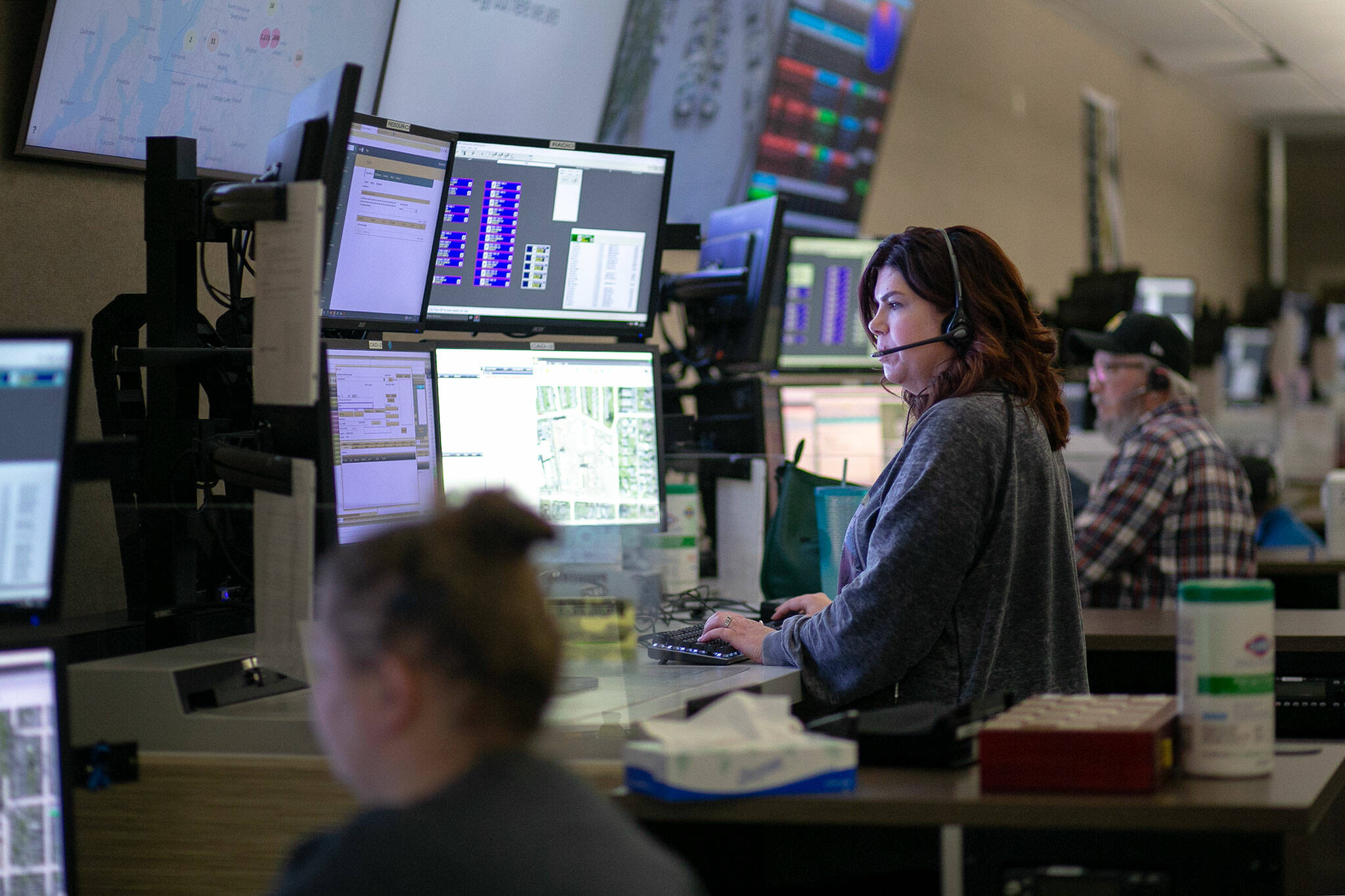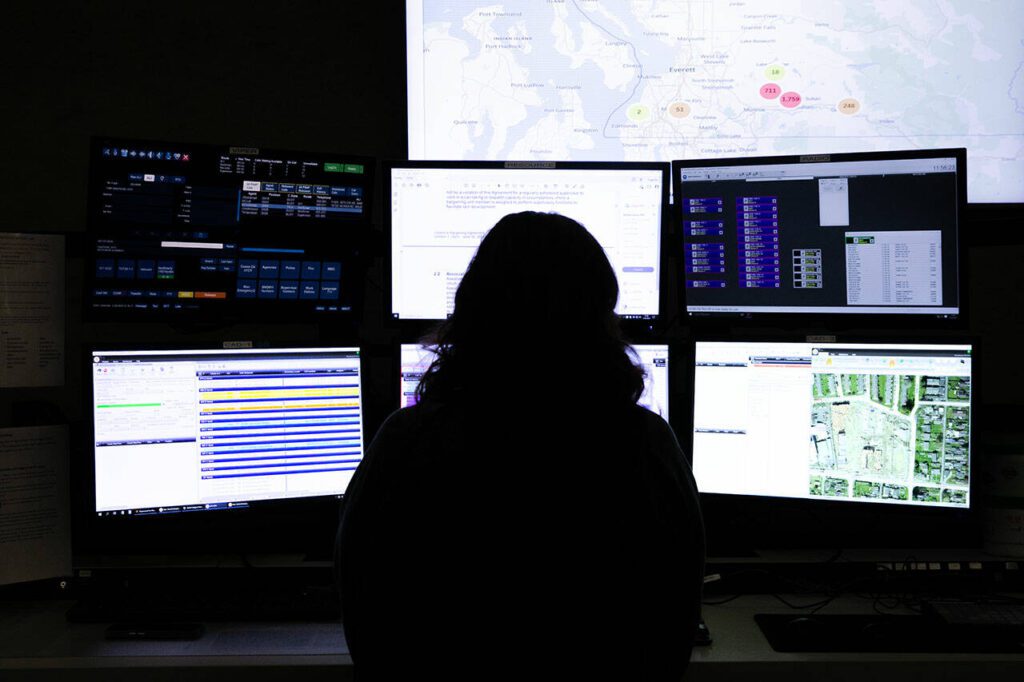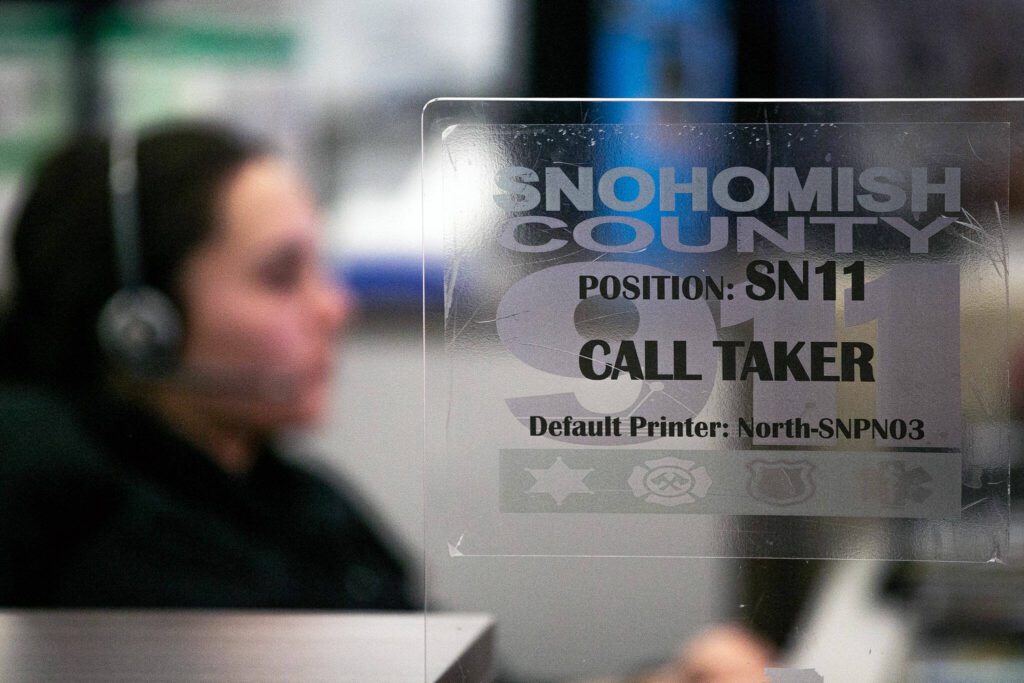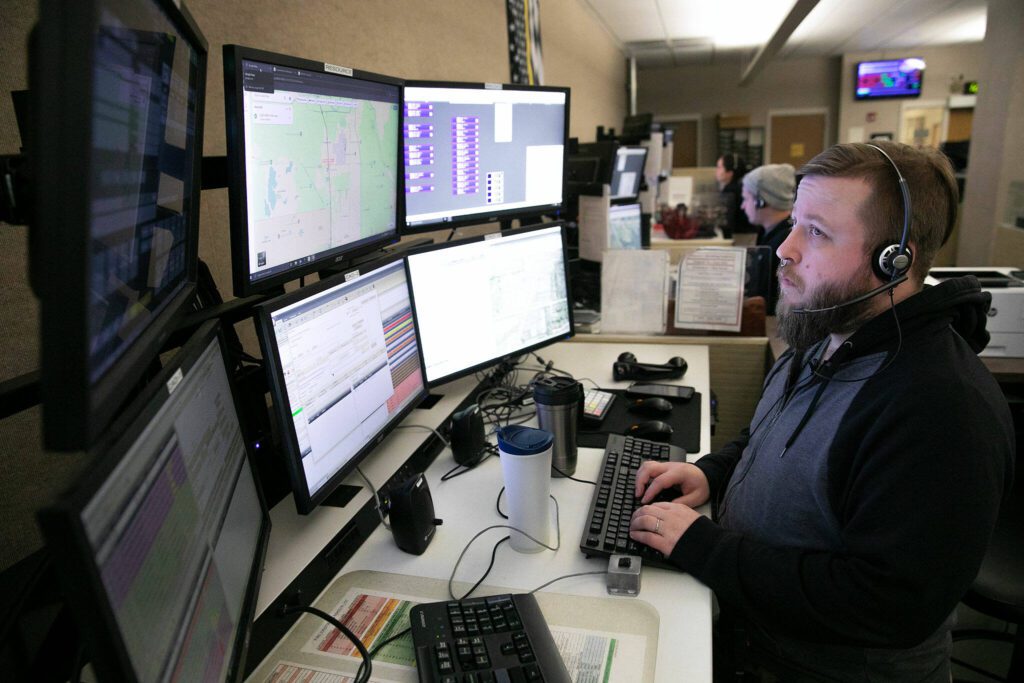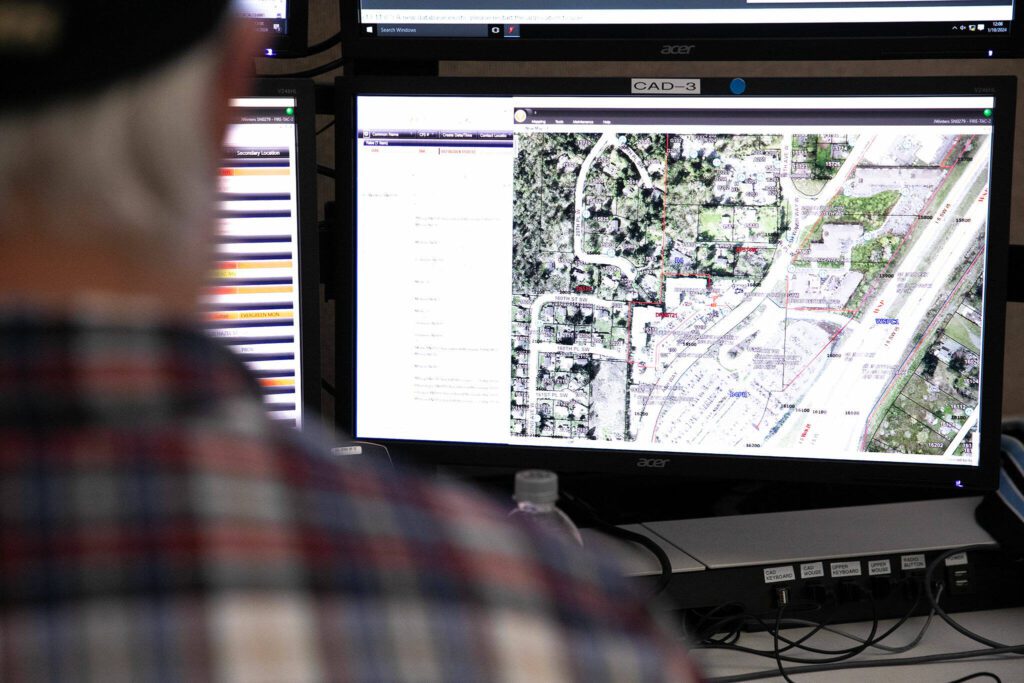EVERETT — Nurses can now help 911 callers in Snohomish County without an emergency room visit.
Snohomish County 911 received almost 111,500 fire and emergency medical calls last year. And often, the only immediate medical care option for these callers has been for a dispatcher to send an ambulance.
Now, if a dispatcher determines an emergency is not life-threatening, they can route the call to a remote team of nurses through a program called Nurse Navigation. Snohomish County 911 officially launched the program Tuesday, in partnership with Global Medical Response and the Snohomish County Fire Chiefs Association.
The nurses help callers decide if they need a walk-in, primary care or telehealth visit. For walk-ins, nurses notify the clinic, provide an estimated arrival time and reason for the visit. Nurses can also coordinate a rideshare to and from an appointment, free of charge for the caller.
If needed, nurses can still dispatch an ambulance.
“Our biggest priority is patient care,” said Christie Veley, spokesperson for South County Fire. “With this program, we can offer immediate medical advice to people and may not have to send them to the hospital.”
Last year, up to 17,000 emergency calls in Snohomish County concerned patients who did not need emergency room treatment. Snohomish County 911 has a list of about 60 incidents that could be better handled by a nurse navigator, including minor injuries and general illness.
“Callers will realize this is better care. It costs them less, and it’s less time to get what they really need,” said Lisa Edmondson, director of nursing for the Nurse Navigation department at Global Medical Response.
The nurses are licensed to provide care in Washington and work out of a Global Medical Response call center in Dallas. They are trained in emergency and telephone triage services and have access to an interpretation service with 250 languages.
Nurses typically help callers in six to eight minutes, Edmondson said. They also follow up with callers the next day.
Snohomish County expects to redirect 3,000 to 5,000 of its emergency calls to nurse navigators this year, said Terry Peterson, deputy director of Snohomish County 911. Since the soft launch of the program earlier this month, he said, dispatchers have already redirected 50 calls.
‘Tapped of resources’
North Sound Accountable Community of Health, a nonprofit working to connect and support health care services in the region, is providing first-year costs of about $365,000 and a one-time starter fee of $60,000. The county will create a report to garner more support from other investors after 2024.
“When all else fails, you call 911 and somebody will show up,” said Liz Baxter, CEO of the nonprofit. “We don’t have enough of a support system to help folks connect people to the right resources.”
Global Medical Response started the Nurse Navigation program in 2018 and now operates out of 29 emergency response systems in 14 states. Most systems with the program route 3% to 5% of their calls to nurses in the first year, Edmondson said. After the first year, the percentage can increase up to 15%.
Local emergency services are “tapped of resources,” Everett Fire Chief Dave DeMarco said. And as the county is expected to grow to 1.1 million people by 2044, he said, the pressure on emergency services is only going to increase.
“Health care access in the United States has changed, and a lot of it has merged into the 911 system,” DeMarco said. “But we can’t keep building more fire stations and hiring more firefighters.”
Calls for fire and emergency medical services in the county increased 27% from 2019 to 2023. Part of this shift has been due to the opioid crisis, an aging population and housing insecurity, Baxter said.
“There has been trauma caused by going to the hospital and spending time there only to be told, ‘We can’t help you, you’re in the wrong place,’” she said. “That’s not the kindest and most caring way we can take care of people in the community.”
‘New solutions’
From October 2022 to October 2023, a Nurse Navigation pilot in Aurora, Colorado saved the city and its patients $1.8 million, based on estimates for ambulance rides and emergency department visits.
But the goal isn’t to save Snohomish County money, Peterson said. It’s to match patients with the right care.
According to surveys, more than half of callers in Aurora were dialing 911 for a reason other than a life-threatening emergency: 23% didn’t know how to access a medical appointment, 20% needed transportation and 17% thought calling 911 would get them to a doctor faster than other options.
“These are people calling with dental pain, a rash, with a fever, those types of things,” said Edmondson, director of nursing for the program. “After talking to a nurse, we can de-escalate and get them the appropriate level of care.”
In Washington, the cities of Seattle, Vancouver and Spokane have signed on to the program within the past two years. In Seattle, 40% of callers who speak with a nurse navigator are redirected from an emergency department to other solutions.
Some fire agencies in Snohomish County have programs to help find long-term solutions for frequent 911 dialers. South County Fire’s team of six community resource paramedics visits up to 200 people a month to identify issues causing multiple emergency calls. They perform medical assessments and home safety surveys, then help coordinate next steps including housing, transportation, in-home care, food and behavioral health services.
Out of the county’s 22 fire agencies, three have a community resource paramedic program. And the agencies can’t afford the program on their own — a recent expansion of South County Fire’s program cost about $1 million and was only possible with outside funding.
In Everett, the Community Assistance Referral and Education Services, or CARES, program connects 911 callers with social workers. A total of four social workers work with the fire department and city library to respond to emergency calls. The program cost about $1.47 million in American Rescue Plan Act funds.
“We’re trying to come up with new solutions for 911 systems across the United States that are so overrun,” Edmondson said. “So the emergency medical system can respond faster to issues that are life-threatening.”
Part of the Nurse Navigation program is public education. The county has plans for a social media campaign and new handouts to provide at its fall prevention classes and elsewhere to help people know when they should dial 911.
“We have issues in our community that are going to take more than 911 to solve,” Baxter said. “We’re trying to make this a region where people feel like whoever they reach out to, they’re going to try and get them to the right place.”
When should you call 911?
Medical emergencies that require a 911 call are life-threatening or may be or become life-threatening. People should call 911 if someone is experiencing:
• Trouble breathing;
• seizures;
• fainting;
• severe injuries;
• severe allergic reaction;
• chest pain, a heart attack or cardiac arrest; and
• other severe pain or urgent medical issues.
Sydney Jackson: 425-339-3430; sydney.jackson@heraldnet.com; Twitter: @_sydneyajackson.
Talk to us
> Give us your news tips.
> Send us a letter to the editor.
> More Herald contact information.
